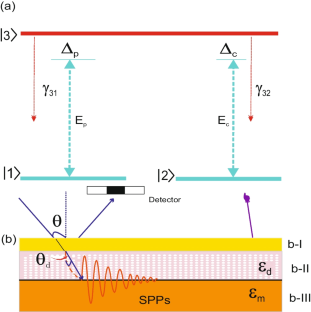Conductivity Dependent Sensitivity of the Surface Plasmon Polariton Waves at the Interface of Metal and Dielectric Using Wavelength Interrogation
Abstract
In this article, coherent manipulation of conductivity-dependent sensitivity of the surface plasmon polariton waves(SPPs) is theoretically investigated at the interface of silver metal and conductive atomic medium based on grating geometry using wavelength interrogation. It is reported that the sensitivity of SPPs depends on the phase and amplitude of the complex conductivity of the conductive atomic medium as well as the parameters of driving fields. The conductivity-dependent wavelength interrogation of sensitivity with respect to the refractive index is written as \(d\lambda /dn_d(\sigma )\) and is a function of complex conductivity. A useful control in sensitivity is investigated with variation of phase and amplitude of complex conductivity as well as probe and control field detunings and Rabi frequency as well as decay rates. The order of diffraction and grating period play an important role in the manipulation of the sensitivity. The sensitivity increases with increasing grating period and decreases with increasing order of diffraction. A maximum value of sensitivity is reported to 600 nm/RIU with amplitude and phase of complex conductivity. The reported results have benefits in sensor devices and plasmonster technology.


 求助内容:
求助内容: 应助结果提醒方式:
应助结果提醒方式:


